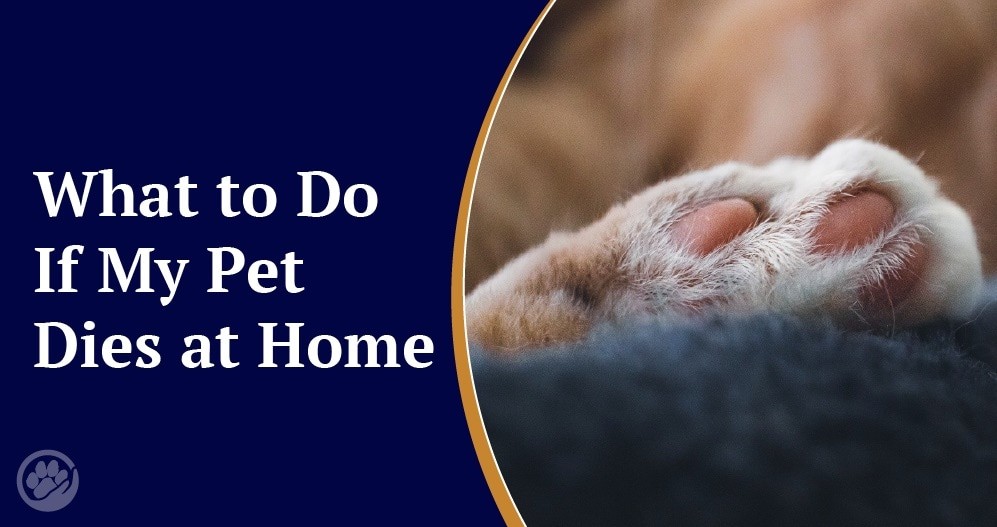Losing a pet is an incredibly painful experience. While many pet owners anticipate saying goodbye at a veterinary clinic, sometimes our beloved companions pass away peacefully at home. Knowing what to do when your pet dies at home can bring a sense of calm during a difficult time. This guide will walk you through the essential steps to take, ensuring you handle the situation with care and respect.
Confirming Your Pet Has Passed Away
Before making any decisions, it’s vital to ensure your pet has indeed passed. Sometimes, especially with older or sick pets, they may appear still and breathe very shallowly, mimicking the appearance of death. Carefully check for a pulse, typically felt on the inner thigh near the back leg, and listen closely for any faint breaths. Take your time and be certain before proceeding.
Contacting Your Veterinarian
Once you’ve confirmed your pet’s passing, take a moment to compose yourself and then contact your veterinarian. Your vet can provide guidance and support during this sensitive time. Even if your pet passes outside of regular office hours, most veterinary clinics have an answering service with instructions for after-hours care or emergencies. If you are away from your regular vet or do not have one, contact the nearest emergency animal clinic. They can offer advice and help you with the next steps.
Considering Options for Your Pet’s Remains
When you speak with your veterinarian, they may inquire about your wishes for your pet’s remains. It’s not necessary to make immediate decisions, but understanding your options can be helpful. Common choices include burial and cremation. Depending on local regulations and personal preferences, you might consider:
- Backyard Burial: If local ordinances permit, you can bury your pet in your backyard.
- Pet Cemetery Burial: Pet cemeteries offer dedicated burial plots for pets, providing a permanent and respectful final resting place.
- Private Cremation: In a private cremation, your pet is cremated individually, and you receive their ashes afterward.
- Communal Cremation: Communal cremation involves cremating multiple pets together, and the ashes are not returned to the owners.
Your veterinarian can often assist in contacting pet cremation or burial services, relieving you of some burden during this emotional period.
Handling Your Pet’s Body with Care
After your pet passes, their body will begin to undergo natural changes. Muscles relax, and there might be some release of bodily fluids. To manage this:
- Place your pet on a towel or blanket: This will provide a comfortable and absorbent surface.
- Move your pet to a cooler location: If possible, move your pet to a cool area, like a garage or basement, to help slow down decomposition. A cool stone or tile floor is ideal.
- Position your pet: Gently arrange your pet’s legs tucked towards their body before rigor mortis sets in, which typically occurs several hours after death. This will make moving and handling your pet easier later.
 A comforting image of a woman holding a deceased dog wrapped in a blanket, representing pet loss at home and the need for aftercare guidance.
A comforting image of a woman holding a deceased dog wrapped in a blanket, representing pet loss at home and the need for aftercare guidance.
Allowing Other Pets to Say Goodbye
If you have other pets in the household, consider allowing them to see and sniff your deceased pet’s body. This can help them understand the loss and begin their own grieving process. Animals also grieve, and this can be a part of their understanding and adjustment.
Keeping Your Pet Cool
While you are making arrangements and preparing for transportation, it’s important to keep your pet’s body cool. You can wrap your pet in plastic bags and keep them in a cool, dry place until you take them to the vet or a pet cremation service picks them up.
Memorializing Your Beloved Companion
In the days and weeks following your pet’s death, you might think about ways to memorialize them. This can be a comforting part of the grieving process. Options for pet memorials are varied and can include memorial products like urns, paw print keepsakes, or memorial gardens. Creating a lasting tribute can help you remember and celebrate the special bond you shared with your pet.
Allowing Yourself Time to Grieve
The loss of a pet is significant, regardless of whether it was expected or sudden. Pets are family members, and their absence leaves a deep void. It’s essential to allow yourself to grieve fully. Surround yourself with supportive friends and family, and don’t hesitate to seek professional grief support if needed. Remember that grief is a personal journey, and there is no right or wrong way to feel.
Navigating pet loss is never easy, but understanding the steps to take when your pet dies at home can provide some measure of comfort and control during a very emotional time. Remember to be kind to yourself and allow yourself the space to heal.
